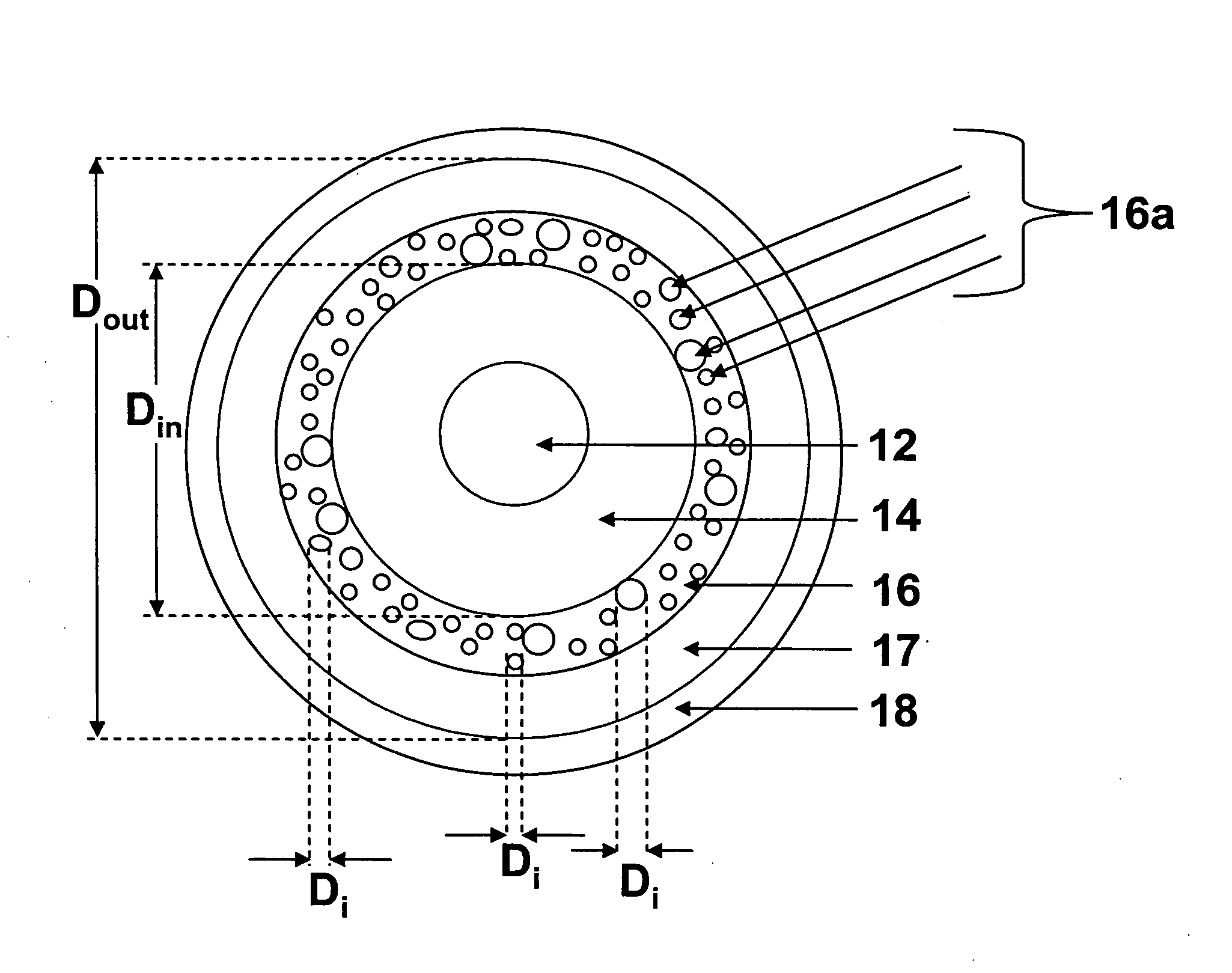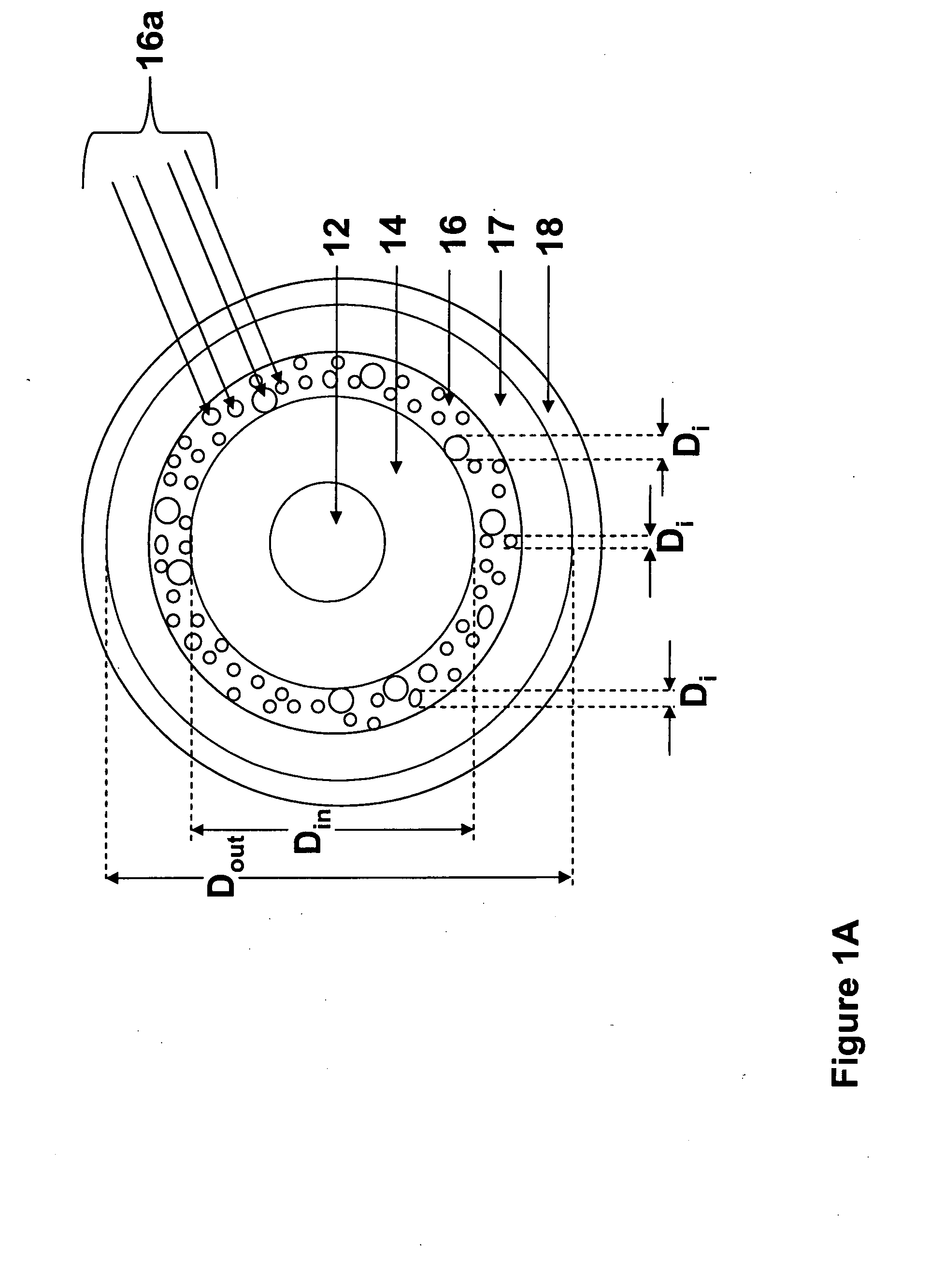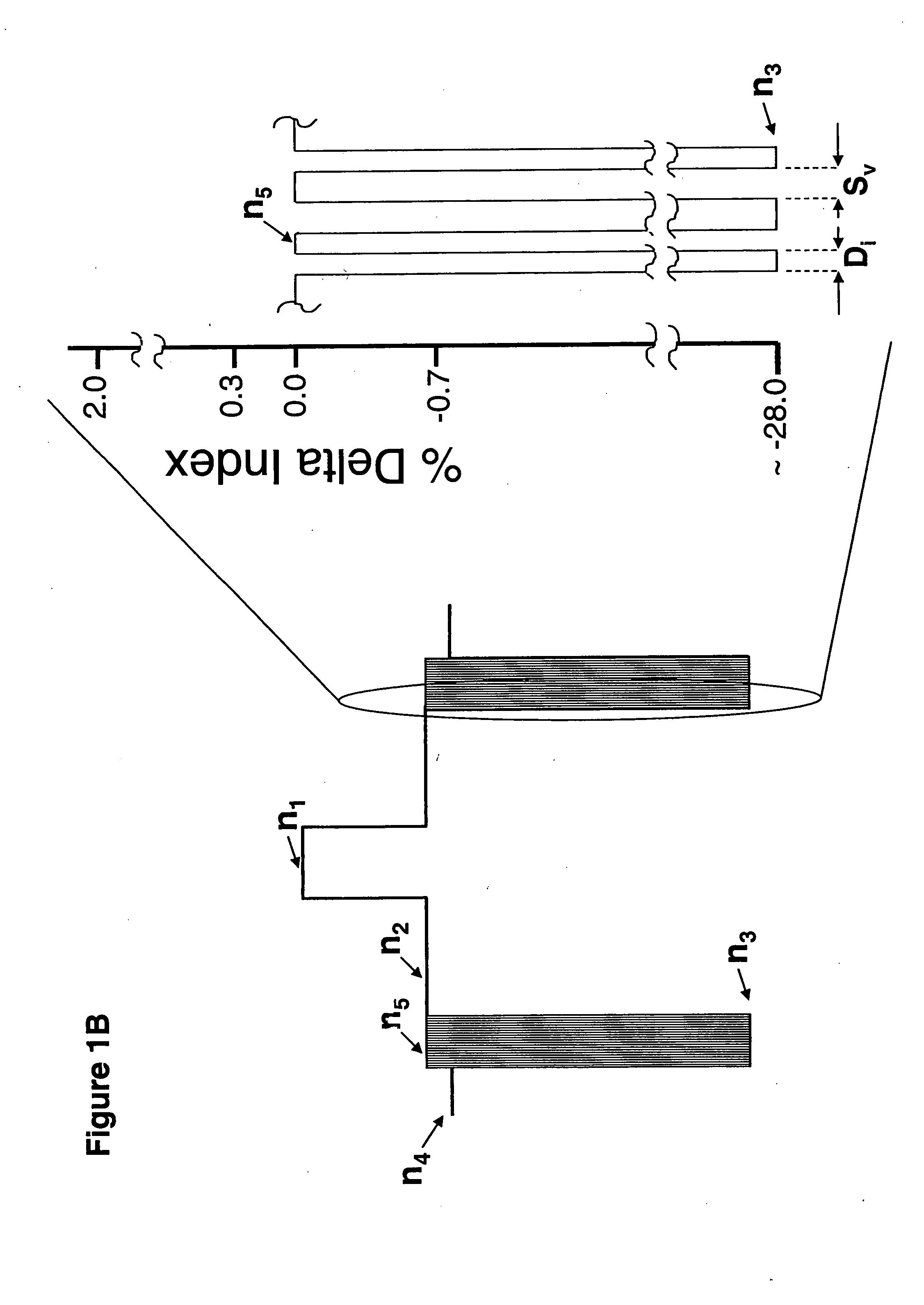High numerical aperture fiber
a technology of optical fibers and apertures, applied in the direction of optical fibers with polarisation, optical waveguide light guides, instruments, etc., can solve the problems of shortening the life of devices, and affecting the performance of devices
- Summary
- Abstract
- Description
- Claims
- Application Information
AI Technical Summary
Benefits of technology
Problems solved by technology
Method used
Image
Examples
example 1
[0046]The optical fiber 10 of example 1 is illustrated schematically in FIGS. 1A and 1B and has a Yb doped core 12, a GeO2-silica inner cladding (refractive index % delta≈0.46) and an outer cladding 16 which doped with fluorine and boron. The refractive index percent (%) delta is defined herein as (ni2−ns2) / 2ni2, where i=1, 2 or 3, and ns is the refractive index of pure silica. The relative refractive index difference (percent delta) of the core 12 (relative to the inner cladding 14) is about 0.56. The outer cladding 16 of this fiber is fluorine / boron doped and comprises N2 containing voids (16% porosity). The Yb-doped fiber core 12 is single-mode for the wavelengths above 1 μm. If the core 12 is doped with Erbium, the optical fiber will be single-mode at lasing wavelength of 1.55 μm. The optical fiber 10 has a relatively low NA (about 0.065) for the core 12, and high NA (0.39, measured at 1380 nm wavelength) for the inner cladding 14. This inner cladding NA is preferably higher tha...
example 2
[0051]This optical fiber of this example is illustrated schematically in FIGS. 1A and 1B and has a Yb doped, silica based core 12 which is multi mode at the lasing wavelength of 1100 μm, a pure silica based inner cladding 14 (delta %≈0) and a pure silica outer cladding 16 with 16% porosity in the void (argon gas) containing region. In this example, the relative refractive index deltas n5 and n3 are about 0% and −28%, respectively (relative to pure silica). The NA of the inner cladding 14, is 0.3 (measured at 1380 nm). The refractive index difference (delta %) of the core 12 relative to the inner cladding, 14, is about 0.7. The core 12 and the first section of the inner cladding 14 are produced by an inside-vapor-deposition (IVD) process. The core GeO2—SiO2 soot is deposited inside the glass tube (first section of the inner cladding) and followed by solution Yb-doping of the core soot. The structure is then sintered into a solid preform. The preform is then used as a bait-rod for the...
example 3
[0056]This active optical fiber of example 3 (also illustrated schematically in FIGS. 1A and 1B) has a Yb doped core 12, a silica based, GeO2 doped silica inner cladding 14 having an NA of 0.3 (measured at 1380 nm), and voids containing outer cladding 16 which is doped with Fluorine and Boron. The refractive index difference (% delta) of the core 12 (relative to the inner cladding) is about 0.7. The specific composition for this optical fiber example is:[0057]Core 12: 0.8 wt % Yb2O3; 9.5 wt % P2O3; 5.4 Wt % GeO2;[0058]Inner cladding 14: 6 Wt % GeO2;
[0059]Outer cladding 16: 9 wt % B and 2.7 wt % F, with 5% porosity (argon containing voids) within the outer cladding with a mean hole size of 300 nm and a standard deviation of 150 nm. In this example, the relative refractive index deltas n5 and n3 are about −1.5% and −28%, respectively (relative to pure silica). The gas filled voids 16A improve the NA of the inner cladding 16 and thus provide a much higher laser pump efficiency, and sin...
PUM
 Login to View More
Login to View More Abstract
Description
Claims
Application Information
 Login to View More
Login to View More - R&D
- Intellectual Property
- Life Sciences
- Materials
- Tech Scout
- Unparalleled Data Quality
- Higher Quality Content
- 60% Fewer Hallucinations
Browse by: Latest US Patents, China's latest patents, Technical Efficacy Thesaurus, Application Domain, Technology Topic, Popular Technical Reports.
© 2025 PatSnap. All rights reserved.Legal|Privacy policy|Modern Slavery Act Transparency Statement|Sitemap|About US| Contact US: help@patsnap.com



